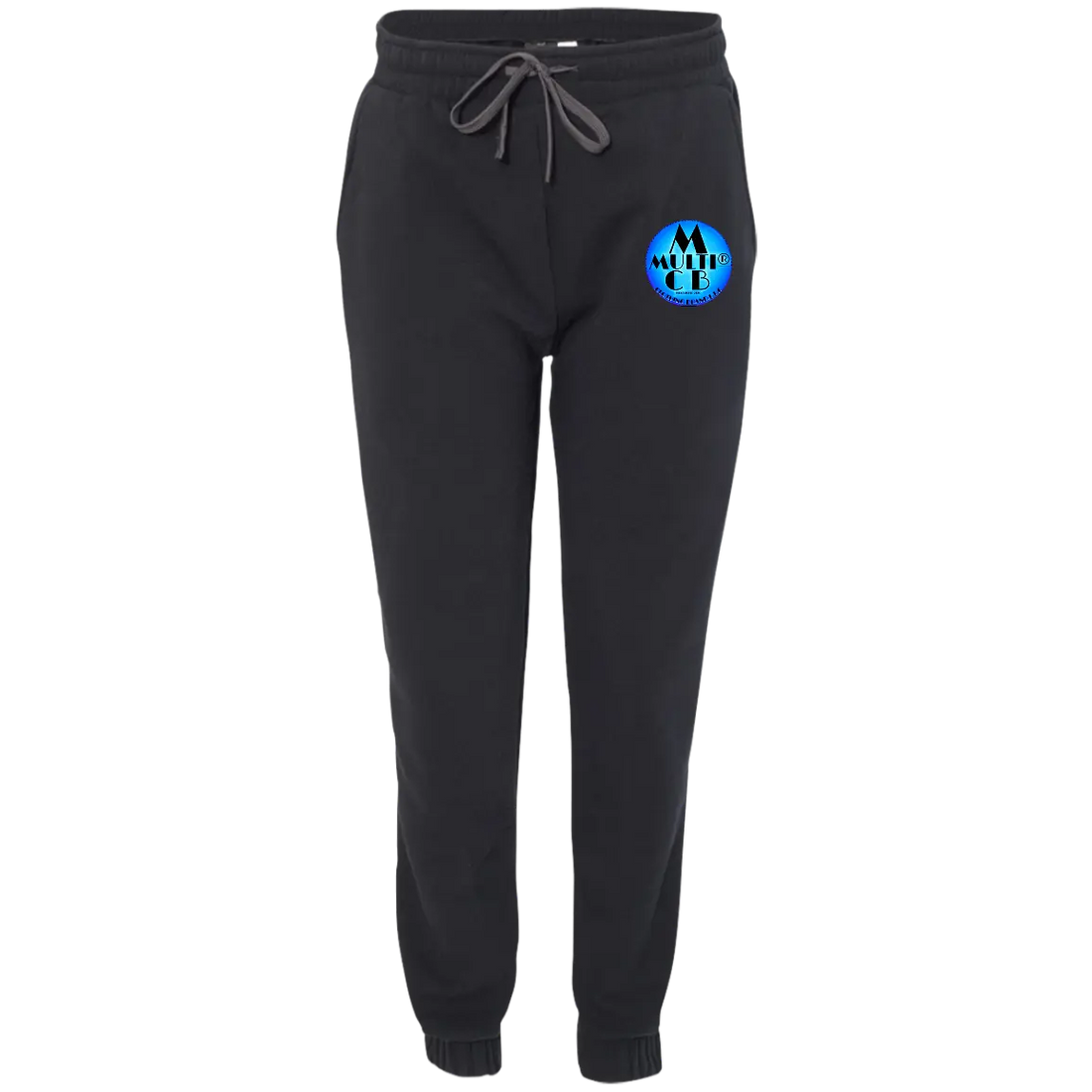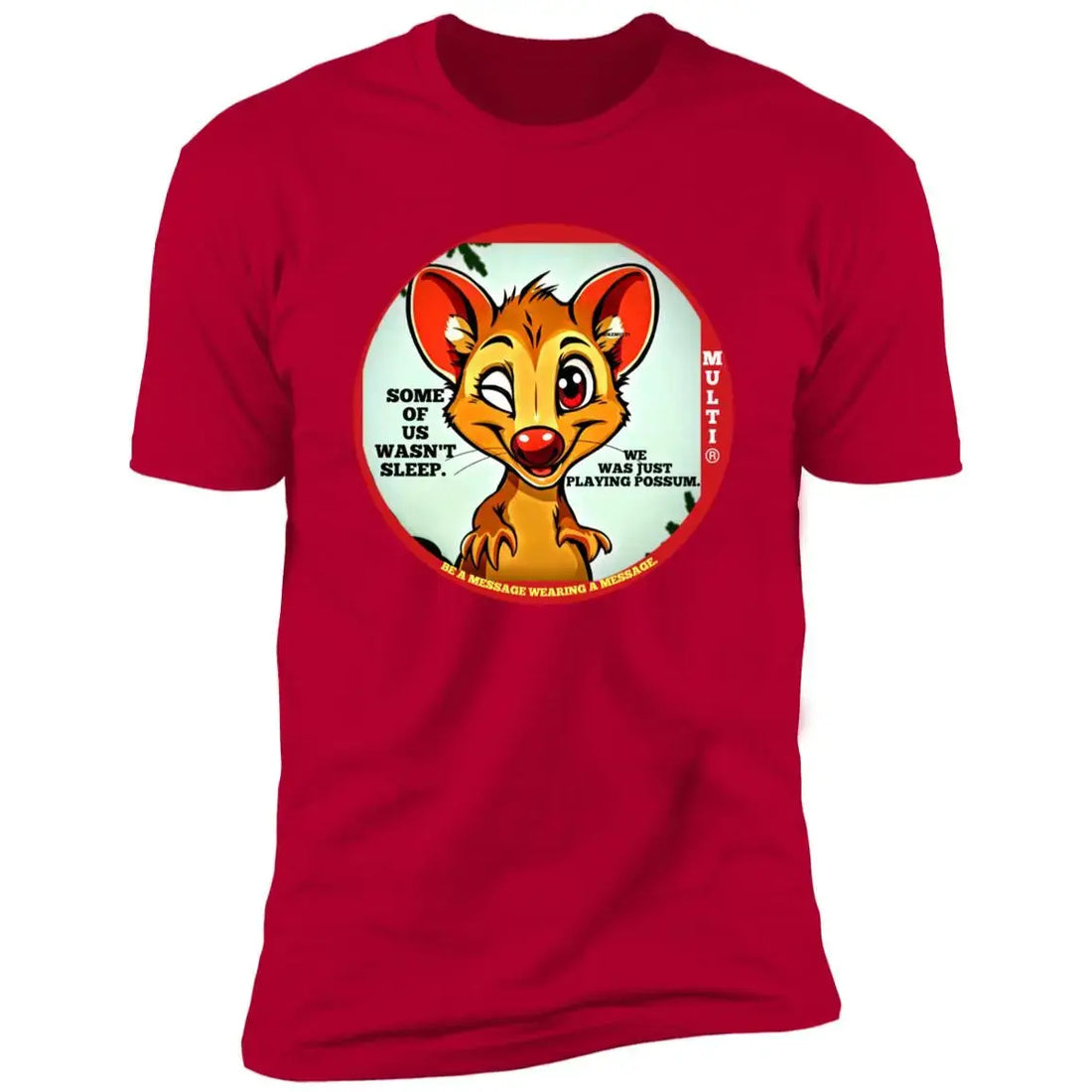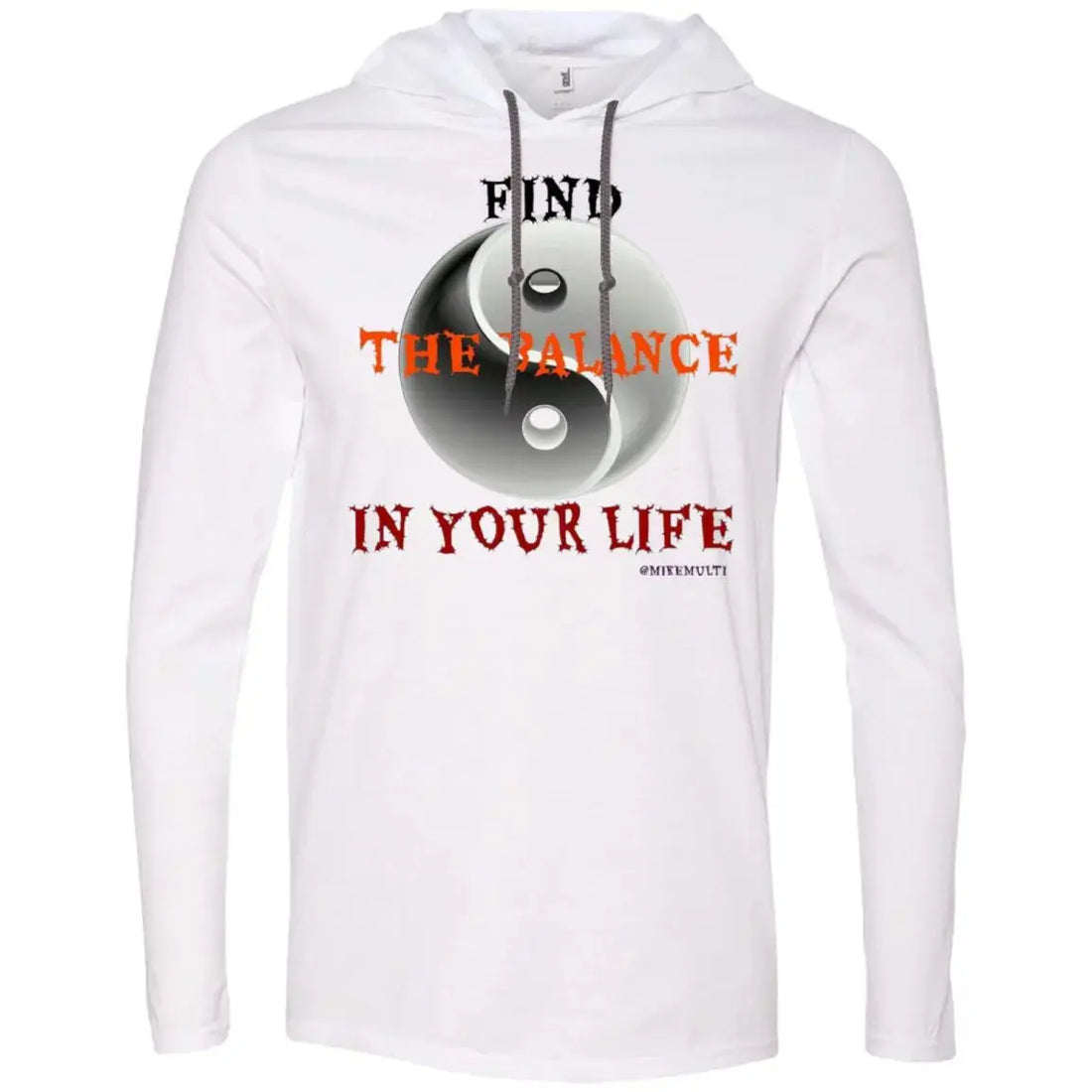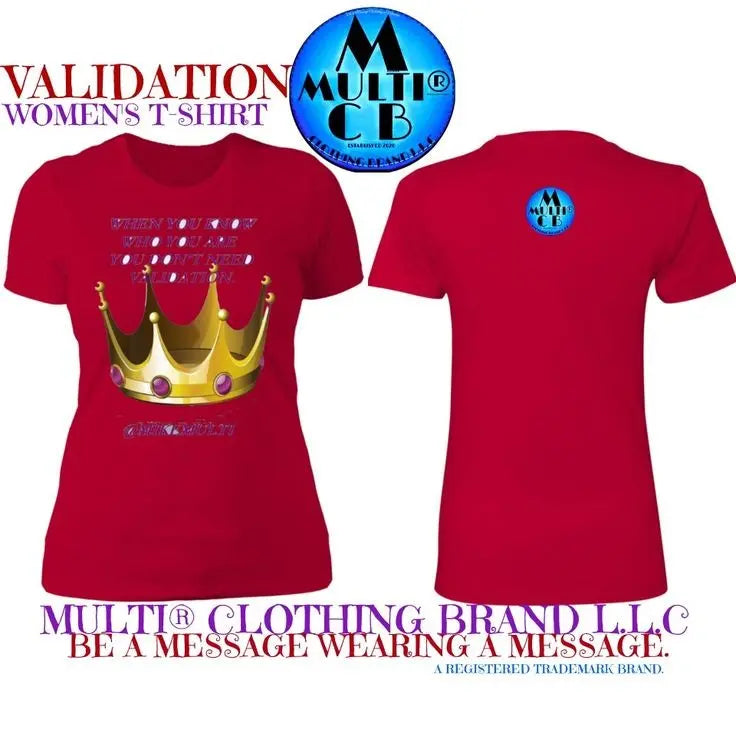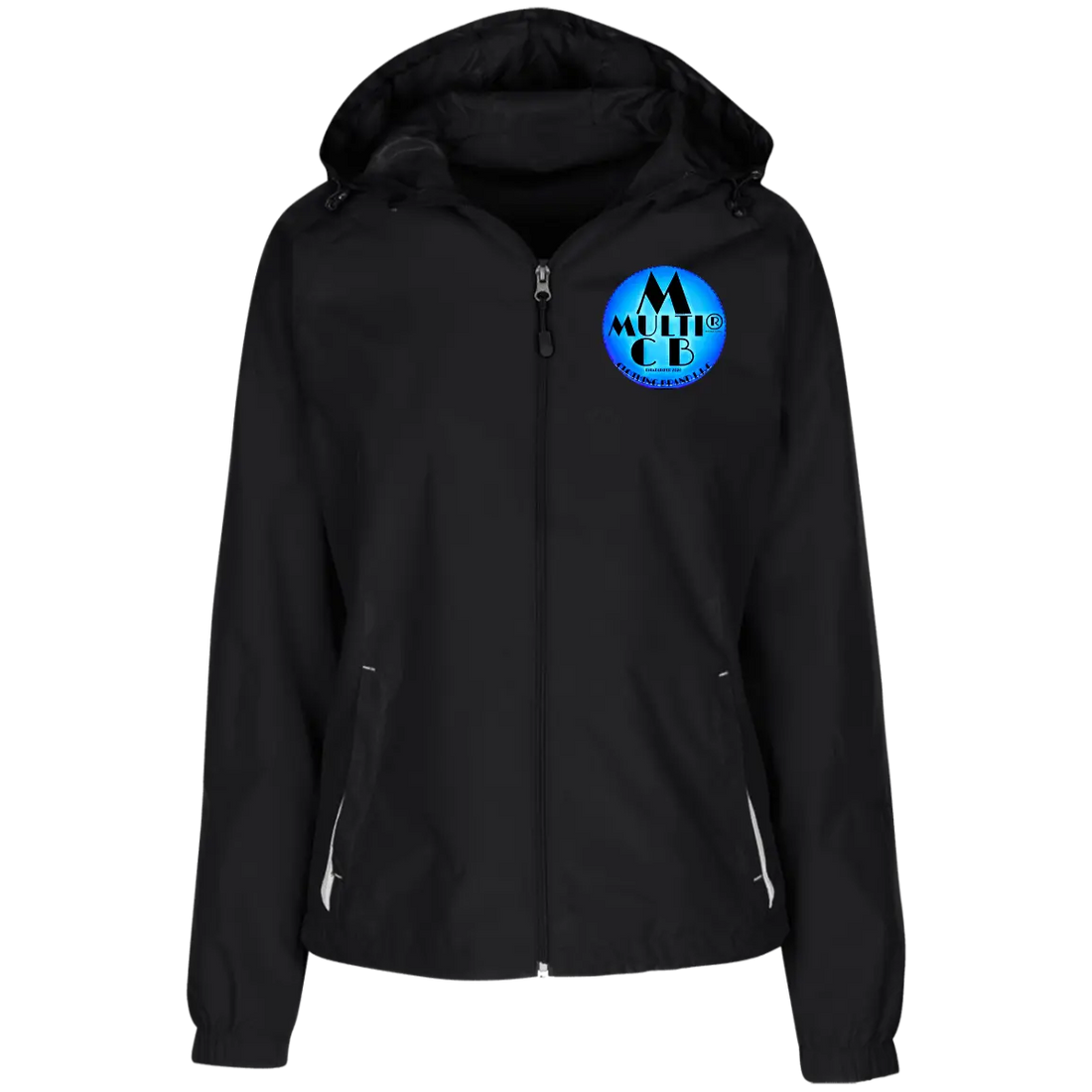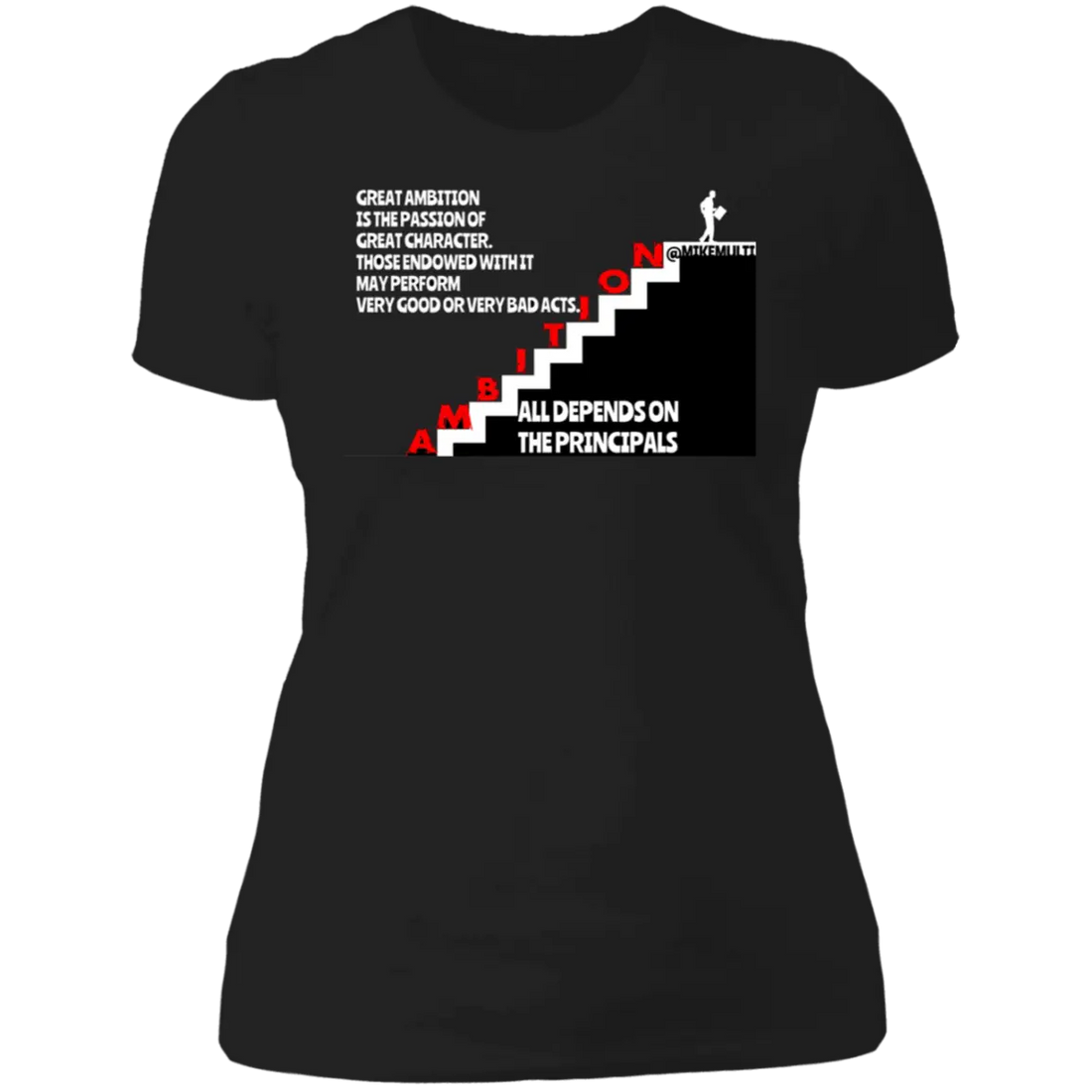Blogs
Spread Positivity with the "Have a Great Day" Men's T-Shirt!
Ever had one of those mornings when you need a little extra push to get the day going? We get it. That’s why the "Have a Great Day" Men's T-Shirt from Multi Clothing Brand L.L.C. is more than just a piece of clothing—it’s a whole vibe.
Learn moreElevate Your Comfort Game: Multi - Adult Fleece Joggers from Multi Clothing Brand LLC
Unleash Your Inner Comfort King with Multi - Adult Fleece Joggers from Multi Clothing Brand LLCIn the whirlwind of modern life, where constant movement and activity are the norm, prioritizing comfort is paramount. And what better way to do that than with a pair of incredibly soft and stylish Multi - Adult Fleece Joggers from Multi Clothing Brand LLC? These joggers are the ultimate embodiment of comfort and style, designed to make you feel relaxed and confident wherever you go. They're not just for lounging around the house, though – they're versatile enough to be worn for a variety of activities, from running errands to hitting the gym to grabbing coffee with friends.Imagine this: you're finally home after a long day. You kick off your shoes, shed your restrictive work clothes, and slip into a pair of these Multi - Adult Fleece Joggers. The soft, plush fleece instantly wraps you in a warm embrace, melting away the stress and tension of the day. The relaxed fit allows your body to breathe and unwind, and the drawstring closure lets you customize the fit to your liking, so you feel perfectly comfortable and secure. Beyond the Comfort: Why Multi - Adult Fleece Joggers are a Must-HaveBut these joggers are more than just a comfy pair of pants. They're a statement piece, a symbol of your commitment to feeling good in your own skin. They're versatile enough to be dressed up or down, making them perfect for a variety of occasions. Pair them with a stylish tee and sneakers for a casual look that's perfect for running errands or grabbing a coffee with friends. Dress them up with a sweater and boots for a more polished vibe that's appropriate for a date night or a casual dinner with friends. Here's the thing: you deserve to feel comfortable and confident, regardless of what you're doing. With Multi - Adult Fleece Joggers from Multi Clothing Brand LLC, you can have both. The Details That Matter: Quality You Can FeelLet's talk about the details that make these joggers so special. They're crafted from premium 7.8 oz 100% Polyester fleece, which is incredibly soft and plush against your skin. It's the kind of fabric that you'll want to touch all the time. The elastic waist and bottom cuff provide a secure and comfortable fit, so you don't have to worry about them slipping or sliding around. And the side pockets are perfect for keeping your essentials close at hand, so you don't have to worry about digging through your bag for your phone or wallet. Let's not forget about the back right hook and loop pocket, which is perfect for keeping your keys or other small items safe and secure. It's the little details that really make these joggers stand out, and they're all designed with your comfort and convenience in mind.More Than Just Joggers: A Lifestyle ChoiceWhen you slip into a pair of Multi - Adult Fleece Joggers, you're not just putting on a pair of pants, you're making a statement. You're saying that you value comfort and style, that you want to feel good in your own skin, and that you're not afraid to embrace your individuality. These joggers are the perfect choice for anyone who wants to feel good in their clothes, regardless of their style or activity level. So why settle for uncomfortable pants that leave you feeling restricted and uninspired? Embrace the comfort and style of Multi - Adult Fleece Joggers from Multi Clothing Brand LLC and experience the difference for yourself.
Learn moreWhen the Dollar Falls: What Motivates You Then?
The Allure of Money: A Powerful Motivator We live in a world where money is the driving force behind countless decisions. It fuels our ambitions, shapes our desires, and dictates our lifestyles. For many, the pursuit of wealth is a primary motivator, a constant driving force pushing them to achieve success and security. It's the key to unlocking a comfortable life, providing for our families, and ensuring a future free from financial worries. This relentless pursuit of financial security can become deeply ingrained in our psyche, shaping our values and determining our choices. The pursuit of wealth can manifest in various ways. It can drive us to work harder, to take calculated risks, and to constantly seek out new opportunities for advancement. We strive for promotions, bonuses, and investments, all in the hopes of securing a comfortable financial future. This is a natural human instinct—a desire to provide for ourselves and our loved ones, to create a life of comfort and stability. The allure of money is undeniable. It provides a sense of control, a feeling of security, and the ability to indulge in desired experiences. We associate it with freedom, opportunity, and the ability to achieve our dreams. It's a powerful force, one that can motivate us to work tirelessly, to overcome obstacles, and to achieve remarkable things. Beyond the Dollar: Finding Meaning in a Changing World But what happens when the very foundation of that motivation crumbles? What if the currency we rely on, the dollar, loses its value? This seemingly distant threat, the prospect of a dollar collapse, is not as far-fetched as some might believe. Economic instability, geopolitical shifts, and unpredictable events could all contribute to a drastic change in the value of our currency. Imagine a world where the purchasing power of your hard-earned savings diminishes overnight, where your carefully crafted financial plans crumble before your eyes. In such a scenario, the question arises: what would motivate you then? Would your ambition fade, or would you find a new compass to guide you? Would you still be driven by the same goals, the same aspirations? Or would you find yourself re-evaluating your priorities, seeking meaning and purpose in a world where the dollar no longer holds its familiar power? The answer to this question can be unsettling, forcing us to confront the true nature of our motivation and the values that lie beneath the surface. Imagine a world where money loses its grip on your life. What would you strive for? Would you find meaning in personal growth, community engagement, or the pursuit of knowledge? The answer to this question may reveal a deeper truth about yourself: that your motivation goes beyond the superficial allure of wealth. It may lead you to a realization that true fulfillment stems from something more profound, something that transcends the limitations of monetary value. Unveiling the Power of Personal Motivation The truth is, true motivation comes from within. It's the fire that burns within you, regardless of external factors. It's the unwavering passion that drives you to overcome challenges, to learn, to grow, and to make a difference in the world. This inner spark is not dependent on the whims of the market or the fluctuations of currency. It's a source of strength that transcends the limitations of material possessions and financial security. Think about the things that truly ignite your passion, the things that make you feel alive. Is it the pursuit of knowledge, the creation of art, the connection with others, or the desire to make a positive impact on the world? These are the things that fuel our soul, the things that give our lives meaning and purpose. They are not contingent on the value of a dollar, nor are they diminished by economic instability. They are the enduring forces that drive us forward, regardless of the circumstances. When the dollar falls, the people who are truly motivated will find a way to thrive. They will adapt, innovate, and create new pathways to success. They will tap into their resourcefulness, their creativity, and their unwavering determination to navigate the changing landscape. Their motivation, rooted in something deeper and more profound, will serve as a guiding light in the face of uncertainty. Consider the stories of individuals who have overcome incredible hardship, individuals who have found meaning and purpose in the face of adversity. They are testaments to the power of human resilience, the strength of the human spirit. Their motivation, fueled by a deep-seated sense of purpose and a belief in their own abilities, has enabled them to navigate through the most challenging of times. Perhaps you'll discover that your passion lies in a different field, or that you have a unique skillset that can be utilized in unexpected ways. The world is full of opportunities for those who are willing to explore and adapt. Think of the ingenuity that emerges during times of crisis. Humanity has a remarkable capacity to rise to challenges and create solutions that were previously unimaginable. So, if you find yourself questioning your motivation in a world where the dollar seems uncertain, don't despair. This could be a chance to discover a deeper, more meaningful sense of purpose. Embrace the challenge, explore your options, and tap into the wellspring of personal motivation that lies within you. Remember, your worth is not defined by the value of a currency. It's measured by the impact you make, the connections you forge, and the legacy you leave behind. Whether you're looking for a stylish and comfortable way to express your love of money, or just want a comfortable T-shirt to wear on your daily adventures, our Money - Ladies - Long S T-Shirt from Multi Clothing Brand LLC is the perfect choice. This T-shirt is made of 100% cotton, preshrunk jersey knit for a comfortable fit, and features a Missy contoured silhouette with a side seam for a flattering look. It's available in a variety of sizes and colors to suit your style.
Learn morePlaying Possum: More Than Just a Phrase, It's a Way of Life - Embodied in a T-Shirt
Playing Possum: More Than Just a Phrase, It's a Way of Life - Embodied in a T-Shirt The world is a cacophony of noise, a relentless onslaught of information, and a constant demand for our immediate attention. Amidst this chaos, it's easy to get swept away, reacting impulsively to every stimulus, every ping, every notification. But there's another way, a more strategic approach to navigating the world, one that involves a certain level of quietude and deliberate observation. It's the art of playing possum, of choosing when to speak and when to listen, when to act and when to wait. It's the art of strategic silence, and for those who understand its power, the Playing Possum - Men's Premium SS - T-Shirt from Multi Clothing Brand L L C is a powerful symbol of that philosophy. Think about the possum itself, a small, seemingly defenseless creature. When faced with a predator, it doesn't fight or flee. It simply goes limp, plays dead. It's a remarkable strategy, a way of blending into the environment and appearing harmless. By doing so, it often manages to escape the predator's attention, giving it a chance to survive and thrive. The Playing Possum Men's Premium T-Shirt captures this essence of strategic silence with its bold and thought-provoking quote: "Some of Us wasn't Sleep, We was just Playing Possum." It's a statement that says, "I'm not just sitting here, I'm observing, analyzing, and waiting for the right moment to act." It's a declaration of awareness, a subtle reminder that there is power in stillness, in the ability to assess the situation before making a move. Playing possum isn't about being passive or inactive. It's about strategic disengagement. It's about stepping back from the immediate fray, clearing your mind, and observing the bigger picture. It's about gathering information, understanding the dynamics at play, and identifying the best course of action. It's about being deliberate, about choosing your battles, and about knowing when to act and when to wait. In a world that constantly pushes us to react, to jump on the latest bandwagon, to be constantly connected and engaged, playing possum can be a powerful antidote. It's a way of reclaiming your power, of asserting control over your own attention, and of making conscious choices about how you engage with the world around you. The Playing Possum Men's Premium T-Shirt is a physical manifestation of this philosophy. It's a way to communicate your understanding of strategic silence, to signal to the world that you're not just going with the flow, but that you're actively observing, analyzing, and choosing your path. It's a statement of self-awareness, a declaration that you're not just reacting, but actively participating in shaping your own reality. But it's not just about the message, it's also about the quality of the shirt itself. The Playing Possum Men's Premium T-Shirt is made with care and attention to detail. It's crafted from 4.3 oz, 100% ring spun combed cotton jersey (Heather Gray 90% cotton/10% polyester), ensuring a comfortable and durable feel. The 32 singles provide exceptional softness, while the 1x1 baby rib-knit set-in collar adds a touch of sophistication. The DIGISOFT® printing method guarantees a vibrant and long-lasting design, so your message will stay strong, even after countless washes. Wearing the Playing Possum Men's Premium T-Shirt isn't just about making a statement, it's about embracing a way of life. It's about taking the time to observe, to reflect, and to choose your actions with intention. It's about recognizing the power of strategic silence and using it to your advantage. So, if you're ready to reclaim your power and embrace a more deliberate way of navigating the world, consider adding the Playing Possum - Men's Premium SS - T-Shirt to your wardrobe. It's a simple yet powerful way to express your philosophy and make a statement that resonates with those who value strategic silence and thoughtful action.
Learn moreFind Your Inner Balance with The Balance Men's T-Shirt Hoodie: A Comprehensive Guide to Cultivating a More Fulfilled Life
The Constant Pursuit of Balance: A Modern Dilemma In the relentless pace of modern life, achieving balance feels like a constant uphill battle. We juggle demanding careers, family responsibilities, social commitments, and personal aspirations, all vying for our precious time and energy. The result? A feeling of overwhelm, exhaustion, and a nagging sense that something's amiss. We long for a sense of inner peace, a feeling of being in control, and the ability to navigate the complexities of life with grace and ease. This yearning for balance is deeply ingrained within us, a fundamental human need to feel grounded and connected to ourselves and the world around us. But finding this elusive state of equilibrium is easier said than done. We're constantly bombarded with messages telling us to strive for more, achieve, and hustle. The pressure to succeed, to keep up with the Joneses, and to constantly push our limits can leave us feeling depleted and out of sync. It's time to reclaim our sense of balance, to prioritize our well-being, and to create a life that aligns with our true values and aspirations. The Power of a Simple Symbol: The Balance Men's T-Shirt Hoodie Enter The Balance - Men's LS TS Hoodie from Multi Clothing Brand LLC, a stylish and comfortable hoodie that's more than just a piece of clothing. It's a powerful symbol, a visual reminder of the importance of finding balance in all aspects of life. Wearing this hoodie isn't just about making a fashion statement; it's about making a conscious choice to prioritize your well-being and to create a life that feels authentic and fulfilling. The Balance - Men's LS TS Hoodie is crafted from high-quality, preshrunk ringspun cotton (or a blend of poly/ringspun cotton for heather colors) for a soft and comfortable feel against your skin. It features a relaxed fit that allows for maximum comfort and movement, making it perfect for everything from casual weekend outings to cozy nights. The circular drawcord and double-needle stitching add durability and a touch of sophistication, making it a versatile choice for various occasions. But it's the bold digital print design that truly sets this hoodie apart. The message of balance is clear and impactful, serving as a constant reminder to prioritize your well-being and to seek harmony in your life. It's a subtle yet powerful way to express your commitment to a balanced lifestyle, inspiring conversation and sparking reflection among those who see it. Whether you're at the gym, running errands, or simply relaxing at home, The Balance hoodie serves as a visual affirmation of your intention to live a more fulfilling and balanced life. Beyond the Hoodie: A Deeper Dive into the Principles of Balance The Balance - Men's LS TS Hoodie is a fantastic starting point for your journey towards balance, but it's just the beginning. Achieving balance isn't about a one-time fix; it's an ongoing process of self-discovery and adjustment. It requires conscious effort, mindfulness, and a commitment to living a life that feels authentic and aligned with your values. Here's a deeper dive into the key principles of balance: 1. The Four Pillars of Balance Many experts agree that balance is best understood through the lens of four key areas: physical, mental, emotional, and spiritual. Each of these pillars plays a crucial role in our overall well-being, and neglecting any one of them can lead to imbalances in other areas. Physical Balance: This encompasses everything from diet and exercise to sleep and hygiene. Maintaining a healthy lifestyle, engaging in regular physical activity, and prioritizing adequate rest are essential for feeling energized and capable of tackling the demands of daily life. Mental Balance: This refers to our cognitive health, including our ability to think, focus, and make sound decisions. Activities that promote mental balance include engaging in intellectually stimulating activities, learning new things, and practicing mindfulness techniques. Emotional Balance: This involves understanding and managing our emotions effectively, recognizing our triggers, and developing healthy coping mechanisms for stress and difficult situations. Emotional balance can be cultivated through therapy, journaling, and building strong support systems. Spiritual Balance: This area pertains to our sense of purpose, meaning, and connection to something larger than ourselves. It can be found through practices such as meditation, prayer, spending time in nature, or engaging in activities that bring us a sense of joy and fulfillment. 2. Cultivating Self-Awareness: The Foundation of Balance Before you can achieve balance, you need to understand where you currently stand. This involves taking an honest look at your life, identifying areas where you feel out of balance, and recognizing your own unique needs and desires. Ask yourself questions like: How do I spend my time? Where is my energy going? What activities bring me joy and fulfillment? What are my core values and how do they align with my current lifestyle? What areas of my life feel out of balance and why? Once you have a better understanding of your current situation, you can start to make conscious choices that will help you create a more balanced and fulfilling life. 3. Practical Strategies for Achieving Balance Now that you have a deeper understanding of balance and your own unique needs, it's time to put these principles into action. Here are some practical strategies you can implement to cultivate a more balanced life: Prioritize self-care: Make time for activities that nourish your physical, mental, and emotional well-being. This might include exercise, meditation, spending time in nature, engaging in hobbies you enjoy, or simply taking a break from the hustle and bustle of daily life to relax and recharge. Set boundaries: Learn to say no to commitments that drain your energy or conflict with your values. Protect your time and energy by setting clear boundaries with others. This could mean saying no to requests that feel overwhelming, delegating tasks, or taking time for yourself even when others are asking for your attention. Practice mindfulness: Pay attention to the present moment without judgment. Mindfulness can help you reduce stress, increase awareness, and cultivate a sense of calm. There are many ways to practice mindfulness, including meditation, yoga, deep breathing exercises, or simply taking a few moments throughout the day to notice your surroundings and your bodily sensations. Seek support: Don't be afraid to reach out for help when you need it. Connect with friends, family, or a therapist to share your challenges and receive support. Building strong relationships with those who care about you can provide a sense of belonging, encouragement, and a safe space to process your emotions. Embrace imperfection: Remember that balance is an ongoing process, not a destination. There will be days when you feel more balanced than others, and that's perfectly okay. The key is to be kind to yourself, to acknowledge your progress, and to keep striving for a life that feels authentic and fulfilling. The Balance Men's T-Shirt Hoodie: A Constant Reminder of Your Commitment The Balance - Men's LS TS Hoodie from Multi Clothing Brand LLC is a powerful symbol of your commitment to living a balanced life. It's a visual reminder to prioritize your well-being, to be mindful of your choices, and to create a life that feels truly aligned with your values. It's a small step towards a bigger picture, a tangible reminder of the journey you're on. Order your The Balance hoodie today and embark on a journey to find your inner balance, one mindful step at a time.
Learn moreGain Your Inner Confidence with the Validation Ladies BF T-Shirt: A Style Revolution for the Modern Woman
Elevate Your Style with the Validation Ladies BF T-Shirt: A Must-Have for the Modern Woman In a world that often feels chaotic and demanding, finding ways to express yourself authentically and confidently is essential. Your clothing choices can play a powerful role in this journey of self-discovery and empowerment. And what better way to make a statement than with a piece of clothing that speaks to your inner strength and individuality? Enter the Validation Ladies BF T-Shirt from Multi Clothing Brand LLC, a stylish and comfortable garment that empowers you to embrace your unique self. More Than Just a T-Shirt: A Symbol of Self-Expression This isn't just any ordinary T-shirt. It's a statement piece designed to make you feel empowered and confident. The Validation design speaks volumes about your self-assurance and your ability to stand out from the crowd. It's a subtle yet powerful way to express your individuality and let the world know you're not afraid to be yourself. It's a visual reminder that you are worthy, validated, and capable of anything you set your mind to. The Power of a Well-Chosen Tee: Making a Statement with Comfort Fashion is a powerful tool for self-expression and is about more than just trends. It's about finding pieces that resonate with your personality and make you feel confident and comfortable. The Validation Ladies BF T-Shirt is designed to do just that. It combines style with comfort, allowing you to feel good inside and out. Why You Need a Validation Ladies BF T-Shirt in Your Wardrobe Exceptional Comfort: Crafted from high-quality, 100% combed ring-spun cotton jersey, this tee feels incredibly soft and comfortable against your skin. It's like wearing a hug, perfect for everyday wear or relaxing at home. Effortless Style: The relaxed boyfriend fit adds a touch of effortless chic to any outfit. It's flattering on a variety of body types and creates a relaxed yet stylish look. Versatile Styling: Pair it with your favorite jeans, leggings, or even a skirt for a casual yet put-together look. Dress it up with a blazer and heels for a more sophisticated vibe. The possibilities are endless, allowing you to create unique looks that reflect your style. Long-Lasting Quality: The fabric is pre-shrunk to ensure a perfect fit, wash after wash. You can rely on this tee to stay true to its shape and feel, season after season. A Boost of Confidence: The Validation design is a subtle yet powerful reminder of your worth. It's a way to express your confidence to the world, and it's a great conversation starter. More Than Just a T-Shirt: A Gift of Confidence Looking for a thoughtful and meaningful gift for a friend or loved one? The Validation Ladies BF T-Shirt is a perfect choice. It's a gift that celebrates individuality, confidence, and self-expression. It's a gift that says, "I believe in you, and I know you can achieve anything you set your mind to." Shop Now and Embrace Your Style: Don't miss out on this stylish and comfortable tee! Head over to Multi Clothing Brand LLC and grab your Validation Ladies BF T-Shirt today. It's time to express your confidence, embrace your individuality, and show the world who you are. You won't regret it!
Learn moreMulti - Ladies Windbreaker Jacket: The Ultimate Blend of Style and Function for the Modern Woman
Multi - Ladies Windbreaker Jacket: The Ultimate Blend of Style and Function for the Modern Woman In the ever-evolving landscape of fashion, where trends come and go, there are certain pieces that transcend time and remain timeless staples in any wardrobe. The Multi - Ladies - JLH WindBreaker from Multi Clothing Brand LLC is one such garment. It's more than just a jacket; it's a versatile statement piece that seamlessly blends style, function, and comfort, making it an essential for every modern woman. The Multi - Ladies Windbreaker Jacket embodies a unique fusion of classic and contemporary aesthetics. Its vintage hooded design exudes a touch of retro charm, while the gently contoured silhouette flatters your figure, ensuring a flattering fit that complements any outfit. The jacket's ability to transition effortlessly from casual to semi-formal makes it an incredibly versatile piece that can be dressed up or down depending on the occasion. Why the Multi - Ladies Windbreaker Jacket is a Must-Have: The Multi - Ladies Windbreaker Jacket offers a perfect blend of style, comfort, and protection, making it a must-have for any fashion-conscious woman. Here's a closer look at the features that make this jacket stand out: 100% Polyester Shell: Crafted with 100% polyester, the shell of this jacket is both lightweight and durable. This material is known for its resistance to wrinkles and fading, ensuring that the jacket maintains its pristine look even after multiple washes and wear. The polyester fabric also exhibits excellent water-repellent properties, making it a reliable shield against light rain and drizzle. Jersey-Lined Comfort: The Multi - Ladies Windbreaker Jacket is thoughtfully lined with soft jersey fabric, creating a cozy and comfortable feel against your skin. This lining not only enhances the warmth and comfort of the jacket but also adds a layer of breathability, preventing you from feeling too hot or sweaty even when you're on the move. Half Elastic, Half Self-Fabric Cuffs: The cuffs of the Multi - Ladies Windbreaker Jacket feature a clever combination of elastic and self-fabric, striking a perfect balance between comfort and security. The elastic portion ensures a snug fit, while the self-fabric provides a smooth and comfortable feel against your skin. This design allows you to move freely without feeling restricted, making the jacket ideal for both active wear and everyday use. Front Zippered Pockets: The Multi - Ladies Windbreaker Jacket is equipped with convenient front zippered pockets, offering a secure and accessible way to store your essentials. You can easily keep your phone, wallet, keys, and other small items within reach, making it perfect for everyday errands, travel, or outdoor activities. Drawcord Hem with Toggle: The drawcord hem with toggle allows you to customize the fit of the jacket to your liking. Whether you prefer a snug and tailored look or a more relaxed fit, you can adjust the hem to achieve the desired silhouette. This feature also enhances the practicality of the jacket, allowing you to seal out the wind and cold for added comfort and protection. Articulated Elbows for Greater Mobility: The Multi - Ladies Windbreaker Jacket features articulated elbows, which enhance your range of motion, allowing you to move freely without any restrictions. Whether you're engaged in active pursuits like walking, running, or cycling, or simply going about your day, this jacket ensures a comfortable and unrestricted fit. It's designed to keep up with your active lifestyle. Style and Versatility: The Multi - Ladies Windbreaker Jacket excels in versatility, effortlessly transitioning from casual to semi-formal wear. It can be paired with everything from jeans and a t-shirt for a laid-back look to a dress or skirt for a more polished style. Its timeless design makes it a perfect complement to a wide range of outfits, ensuring you always look and feel your best. The Perfect Choice for Every Occasion: Whether you're heading out for a casual brunch with friends, embarking on a scenic hike, or tackling the chilly autumn air during your morning commute, the Multi - Ladies Windbreaker Jacket is a versatile and reliable companion. It's the perfect choice for any occasion where comfort, style, and protection are paramount. The Multi - Ladies Windbreaker Jacket: An Investment in Style and Function: The Multi - Ladies - JLH WindBreaker from Multi Clothing Brand LLC is more than just a jacket; it's a statement piece that reflects your commitment to style, functionality, and quality. It's a wardrobe essential that's sure to become a cherished companion for years to come. With its blend of comfort, protection, and versatility, it's an investment that will pay dividends in both style and functionality for every modern woman.
Learn moreElevate Your Style and Mindset with the Prosper On Purpose Men's T-Shirt: A Statement of Ambition and Success
Unleash Your Inner Drive with the Prosper On Purpose Men's T-Shirt In a world saturated with generic apparel, it's refreshing to discover a garment that not only looks good but also resonates with your aspirations and values. The Prosper On Purpose Men's T-Shirt from Multi Clothing Brand LLC is more than just a piece of clothing; it's a statement of ambition, a visual reminder to pursue your dreams with unwavering purpose. This meticulously crafted t-shirt embodies the essence of success, encouraging you to embrace your potential and strive for greatness. Its bold and impactful message, "Prosper On Purpose," serves as a daily affirmation to stay focused, driven, and aligned with your goals. Imagine yourself walking into a meeting, radiating confidence and exuding a sense of purpose that commands attention. Or picture yourself at the gym, your shirt a symbol of your commitment to pushing your limits and achieving peak performance. The Prosper On Purpose Men's T-Shirt isn't just about looking good; it's about feeling confident and empowered to conquer any challenge that comes your way. Beyond Style: Comfort and Quality that Lasts The Prosper On Purpose Men's T-Shirt isn't just about making a statement; it's about feeling confident and comfortable throughout your day. Crafted from high-quality materials, this t-shirt offers a luxurious feel that you'll appreciate with every wear. The 4.3 oz, 100% ring spun combed cotton jersey fabric provides a soft, vintage-inspired texture that feels incredibly comfortable against your skin. This premium fabric not only feels good but also boasts exceptional durability, ensuring that your t-shirt stands the test of time. Imagine the feeling of slipping on this t-shirt after a long day, its softness enveloping you in a comforting embrace. It's a tangible reminder of the importance of self-care and the pursuit of a fulfilling life. The Prosper On Purpose Men's T-Shirt elevates the everyday experience, transforming a simple piece of clothing into a symbol of self-care and personal fulfillment. For those who prefer a slightly different feel, the heather gray option combines 90% cotton with 10% polyester for added strength and a unique, contemporary look. The heather gray blend provides a subtle texture and a more modern aesthetic, allowing you to express your personal style with confidence. No matter your preference, the Prosper On Purpose Men's T-Shirt offers a level of comfort and quality that you won't find in ordinary apparel. It's the perfect blend of style and functionality, ensuring that you look and feel your best in any situation. More Than Just a T-Shirt: A Symbol of Your Journey Wearing the Prosper On Purpose Men's T-Shirt is more than just putting on a piece of clothing; it's a declaration of your commitment to personal growth and achieving your goals. This t-shirt represents a mindset, a philosophy of life that embraces ambition and purpose. It's a visual reminder of the values that drive you: hard work, determination, and the unwavering belief that anything is possible. Every time you look down at your shirt, it serves as a powerful source of motivation, reminding you to stay focused on your goals and never give up on your dreams. Imagine yourself at a networking event, striking up a conversation with someone who shares your aspirations. The Prosper On Purpose Men's T-Shirt becomes a conversation starter, a symbol of your shared values and a testament to your commitment to success. The t-shirt's design is more than just a statement; it's a symbol of your journey, a visual representation of your dedication to personal and professional growth. It's a testament to your ambition, a badge of honor for those who refuse to settle for anything less than their full potential. Key Features That Elevate Your Experience Premium Fabric: 4.3 oz, 100% ring spun combed cotton jersey Vintage T-shirt for unmatched comfort and durability. The premium fabric feels soft against your skin, ensuring that you stay comfortable throughout the day. Heather Gray Option: 90% cotton/10% polyester blend for added strength and a unique look. The heather gray blend provides a subtle texture and a more modern aesthetic, allowing you to express your personal style with confidence. Fabric Laundered: Ensures a soft and comfortable feel right out of the package. The fabric laundering process guarantees that the t-shirt feels incredibly soft and comfortable from the first wear, eliminating any need for pre-washing. 32 Singles Construction: Provides exceptional softness and a luxurious feel. The 32 singles construction is a testament to the high quality of the fabric, resulting in an exceptionally soft and luxurious feel that you'll appreciate with every wear. 1x1 Baby Rib-Knit Set-in Collar: Adds a touch of refinement and a classic look. The 1x1 baby rib-knit set-in collar adds a touch of elegance and sophistication to the t-shirt, ensuring that it looks great with any outfit. Easy Care: Machine wash cold and tumble dry low for hassle-free maintenance. The t-shirt's easy care instructions make it a breeze to maintain, ensuring that it stays looking its best for years to come. DIGISOFT® Print Method: High-quality printing ensures vibrant colors and a long-lasting design. The DIGISOFT® print method guarantees that the design remains vibrant and crisp, even after multiple washes. Elevate Your Style and Mindset Today The Prosper On Purpose Men's T-Shirt from Multi Clothing Brand LLC is more than just a piece of clothing; it's a statement of your ambition, a symbol of your journey, and a reminder to live with purpose. It's a powerful statement of your values, a testament to your unwavering pursuit of success. The Prosper On Purpose Men's T-Shirt is more than just a piece of clothing; it's an investment in yourself, in your journey, and in your future. Invest in a t-shirt that reflects your values and empowers you to achieve greatness. Make a statement that inspires others and propels you forward on your path to success. Order your Prosper On Purpose Men's T-Shirt today and experience the difference. Be a Message Wearing a Message.
Learn moreBe a Message of Ambition: Walking Around Wearing "Ambition - Ladies T-Shirt" from Multi Clothing Brand LLC
Be a Message of Ambition: Walking Around Wearing "Ambition - Ladies T-Shirt" from Multi Clothing Brand LLC In a world that often tries to dim your shine, it's crucial to make a statement. Embrace your ambition and let it be the driving force behind your every step. What better way to do this than to wear your ambition? The "Ambition - Ladies T-Shirt" from Multi Clothing Brand LLC is more than just a piece of clothing; it's a powerful declaration. This Ladies' T-shirt is a tangible reminder of your goals and aspirations, a constant beacon of motivation that you wear with pride. Imagine walking down the street, your confidence radiating with every step. You're not just wearing a shirt; you're wearing a message. The message of ambition. The message is that you're unstoppable. The message is that you're ready to achieve your dreams. This Ladies T-Shirt from Multi Clothing Brand LLC isn't just about the words printed on the fabric; it's about the attitude it embodies. It's about the way it makes you feel - empowered, confident, and ready to take on the world. When you put on this shirt, you're not just getting dressed; you're putting on your game face, you're putting on your ambition, you're putting on your power. Think about the impact of this message. Every time you walk into a room, every time you engage in a conversation, every time you face a challenge, you're subtly, yet powerfully, reminding yourself and everyone around you of your ambition. You're not just a person; you're a message of ambition. You're a walking reminder that anything is possible, that dreams are meant to be chased, and that success is within reach. The "Ambition - Ladies T-Shirt" from Multi Clothing Brand LLC is a conversation starter. It sparks curiosity. It invites questions. It opens the door to sharing your journey, goals, and aspirations. It's a way to connect with others on a deeper level, to inspire and be inspired, and to build a community of ambitious individuals striving for greatness. This Ladies T-Shirt from Multi Clothing Brand LLC is a symbol of your power. It's a visual representation of your inner strength, unwavering belief in yourself, and commitment to achieving your dreams. It's a way to communicate your ambition without saying a single word. It's a way to project confidence, determination, and a sense of purpose. Imagine the impact this message has on your mindset. Every time you glance at the shirt, you're reminded of your ambitions. It's a daily dose of motivation, a constant reminder to keep pushing forward and to never give up on your dreams. It's a powerful tool for self-belief and self-empowerment. Think of the subtle impact on others. They may not consciously understand the message, but they will feel the energy emanating from you. They will see your confidence, your determination, and your sense of purpose. You become an inspiration, a role model for others who are striving to achieve their own goals. This Ladies T-Shirt from Multi Clothing Brand LLC is a statement piece. It's a conversation starter. It's a way to connect with others on a deeper level, to share your passion, and to inspire them to pursue their own dreams. It's a way to be a message of ambition, to walk around wearing your aspirations with pride. So, if you're looking for a way to express your ambition, to wear your heart on your sleeve, to project confidence and determination, look no further than the "Ambition - Ladies T-Shirt" from Multi Clothing Brand LLC. It's more than just a shirt; it's a statement. It's your statement. When you wear your "Ambition - Ladies T-Shirt" from Multi Clothing Brand LLC the world can't help but notice. You become a beacon of inspiration, encouraging others to chase their dreams. It's a powerful message, and it starts with you. Be a Message Wearing a Message.
Learn more



